Vitriol Works
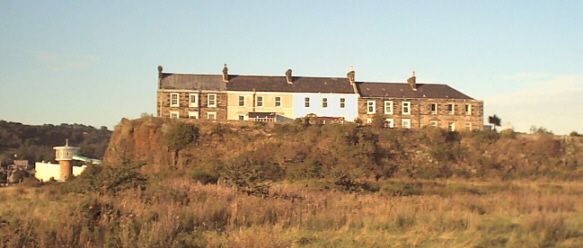
South View, Site of Vitriol Works
Vitriol Works intro.by John H. Harris
Burntisland Vitriol Works
The late eighteenth century was a time when small change was in short supply. This gave rise to many private trade tokens being used throughout Britain. One of these originated in Fife, a copper halfpenny 'issued' in 1797 by the Burntisland Vitriol Company (BVCo. This was one of Scotland's earliest chemical works, and was located on the eastern edge of the town, perched on a rocky promontory overlooking the wide expanse of the Firth of Forth with the outline of Edinburgh in the distance. The works would probably have been one of the first things in view when crossing the river by the established ferry route from Edinburgh's port of Leith to Burntisland. Its principal product was sulphuric acid, more commonly known then as 'oil of vitriol'.
In the eighteenth century the most common method of bleaching linen and cotton fabrics was to boil or wash them in a weak alkaline solution composed of wood ash or stale urine then treat them with a weak acid such as buttermilk or sour milk.1 The fabric was then rinsed with water and rolled out on to bleaching fields for several months to whiten in the sun. The material was normally kept wet by means of a watering can. In the mid-1700s it was found that the process could be speeded up if a solution of sulphuric acid (vitriol) was used instead of buttermilk. Vitriol therefore became an essential bleaching material in Scotland until chlorine in the form of bleaching powder was introduced in the early 1800s.
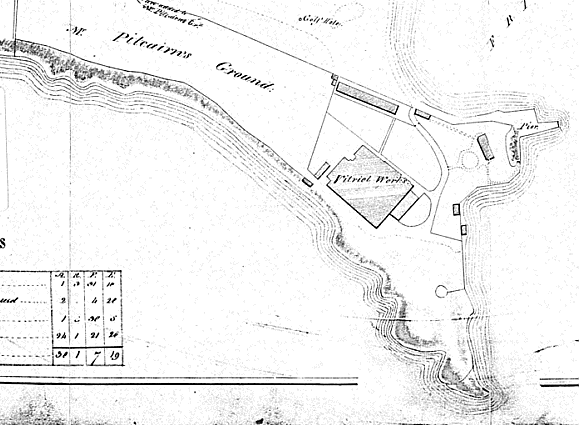
Vitriol Token. Available to view at Heritage Centre
The token that Pitcairn and his partners produced in 1797 is unusual in that it seems to be the only one issued by the infant chemical industry. Most trade tokens of the industrial revolution period relate to the textile, iron production or metal working industries, along with transport, commerce and politics of the day. However, the Burntisland halfpenny does have strong links with the textile and linen related tokens produced in nearby Perthshire and further north across the River Tay in Dundee and Angus. The link is in the use of Burntisland-produced acid in the bleaching process of linen yarn and cloth in Fife, Perth and Tayside.
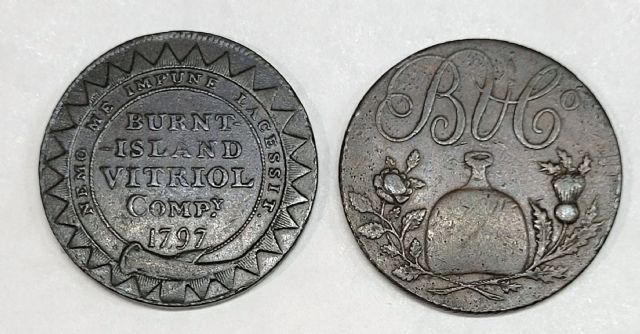
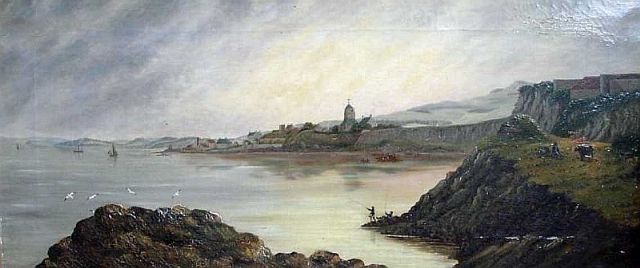
S.Humble 1834 of Lammerlaws
The above painting depicts the Lammerlaws in 1834. The site was much altered in the late 1800s with the building of a breakwater and the new east Docks. Much of the cliffs seen in the middle ground were used to build the breakwater. To the right in the foreground is North View and the probable remains of the Vitriol Works. The painting is available to view in Burntisland Burgh Chambers and was recently restored by Burntisland Heritage.
No trace of the vitriol works exists today because early Victorian terraced houses (South View) now sit on its footprint There is a ruined lime kiln nearby that some historians have associated with the works (Fig.8). However, John Ainslie's 1775 map of the County of Fife depicts lime kilns on the Lammerlaws so these must predate the vitriol works. In any case the lime would probably have been used for mortar for walls and buildings, rather than for vitriol manufacture. The site of Pitcairn's now-demolished dwelling house at the Gallows Hill has now been renamed (less gruesomely) as 'Galahill'. t
A selection of photographs of South View & Gala Hill

Humble painting 1834
Humble painting 1834. before creation of harbour wall.Buildings on right are probably showing Vitriol Works.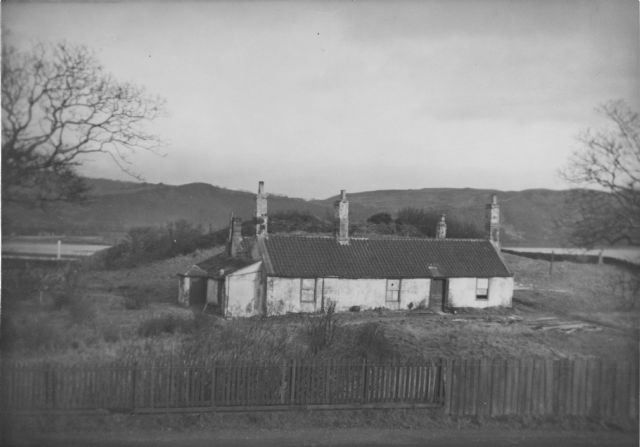
Galahill Cottage
Galahill Cottage which was also used as a fever hospital.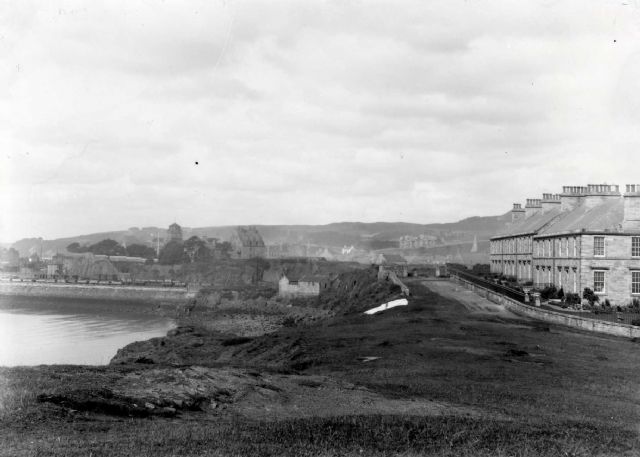
South View 1984
A picture of South view from 1984
South View
A recent photo of South View site of the Vitriol Works.

